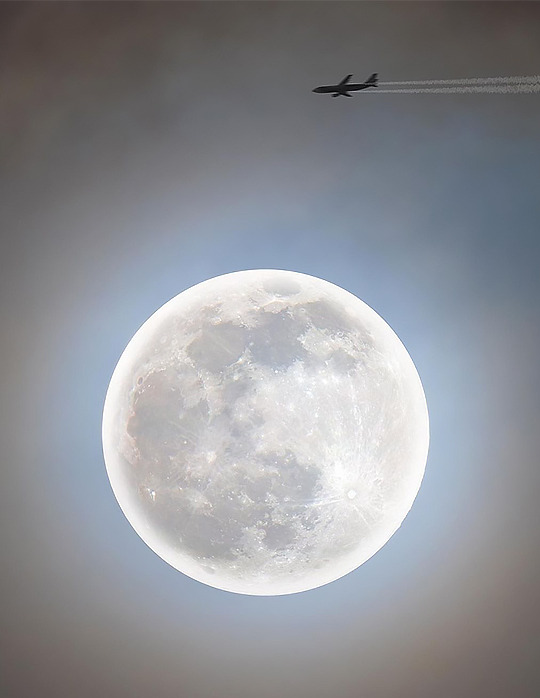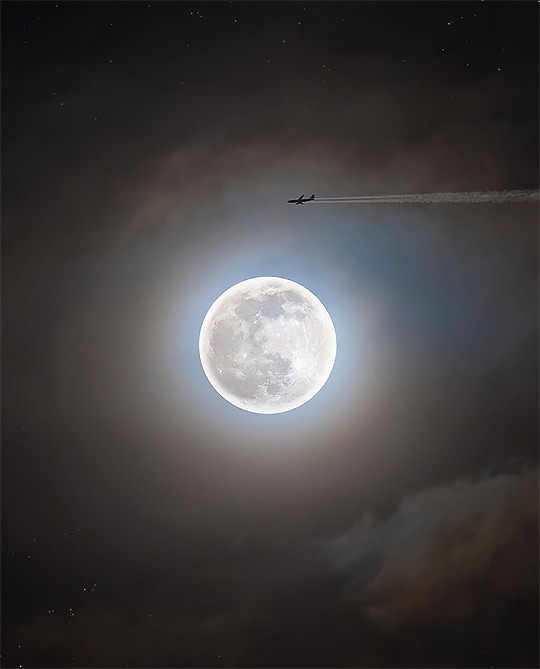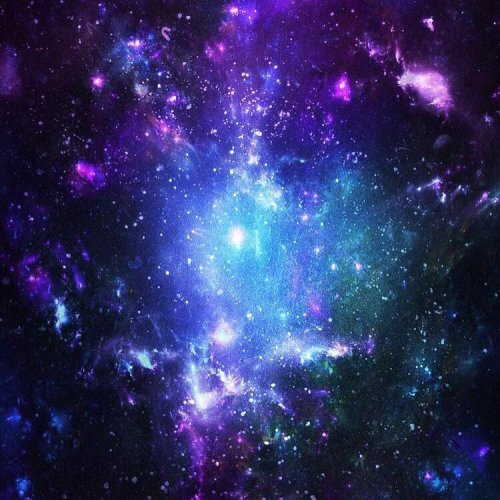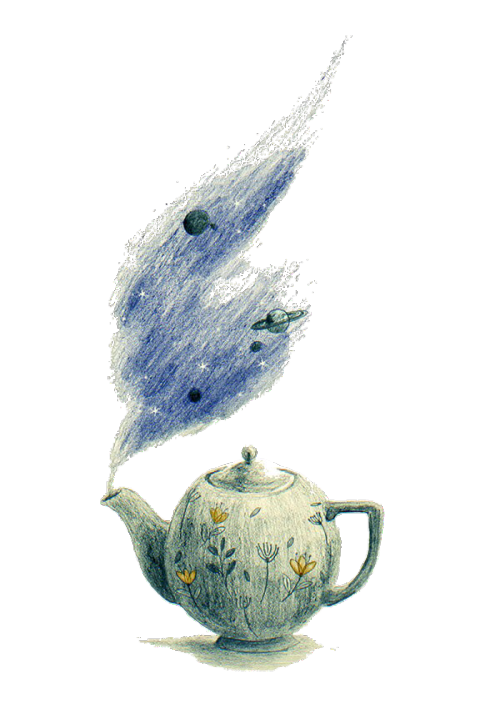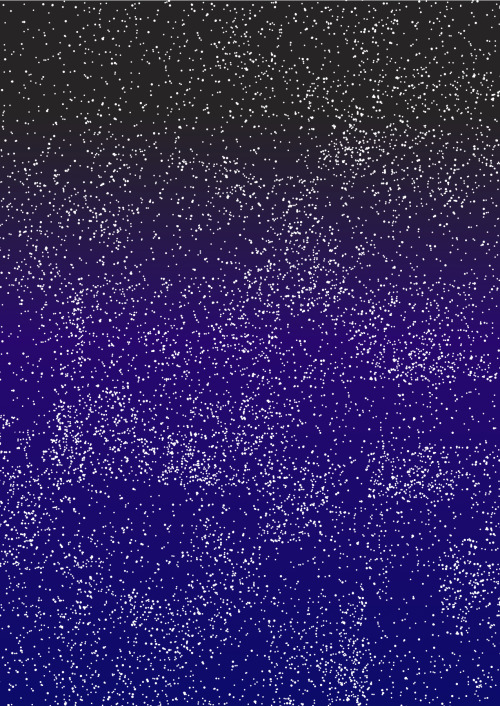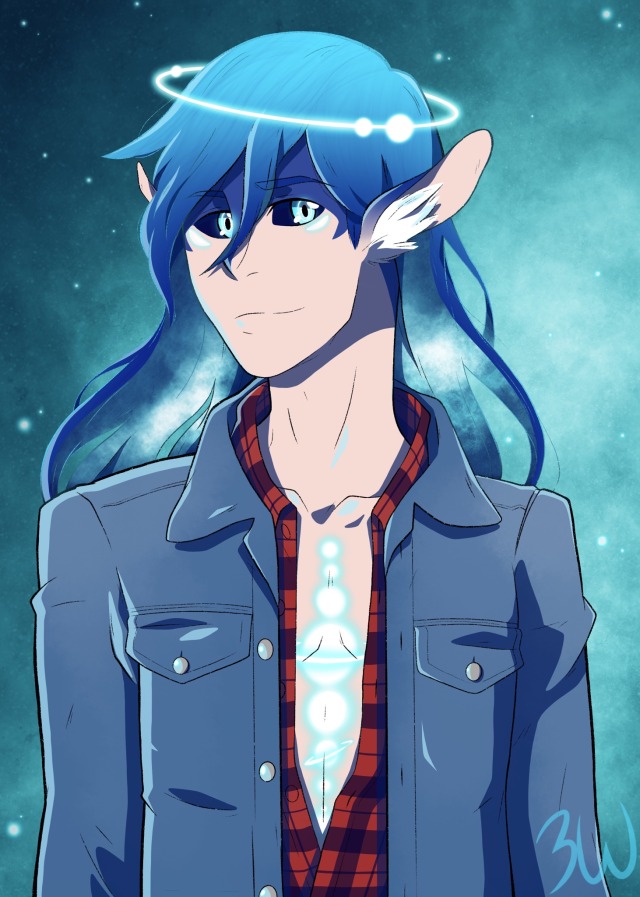#galaxy

Butterfly Nebula lEricsElectrons





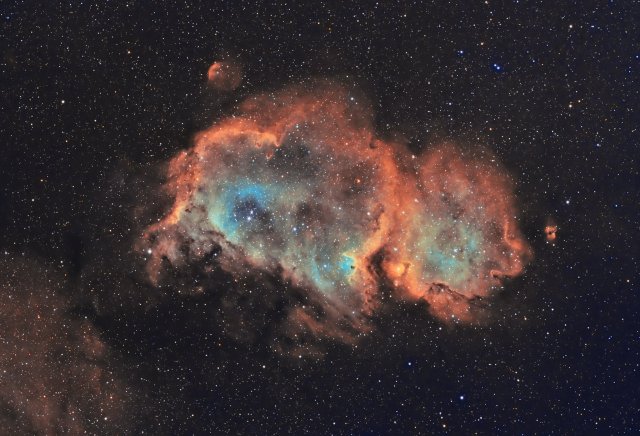



“Across the sea of space, the stars are other suns.”—Carl Sagan
l Nebulae & Stars taken by Nick Perkins

Similar in size to large, bright spiral galaxies in our neighborhood, IC 342 is a mere 10 million light-years distant in the northern constellation of Camelopardalis. It would be a prominent galaxy in our night sky, but it is hidden from clear view and only glimpsed through the veil of stars, gas and dust clouds along the plane of the Milky Way galaxy. Even though IC 342’s light is dimmed and reddened by intervening cosmic clouds, this sharp telescopic image shows the galaxy’s dust, young star clusters, and glowing pink star forming regions along spiral arms that wind far from the galaxy’s core. IC 342 may have undergone a recent burst of star formation activity and is close enough to have gravitationally influenced the evolution of the local group of galaxies and the Milky Way.
Image Credit & Copyright: Daniel Feller

Young blue stars circling the galactic center dominate the Andromeda Galaxy in this image taken in ultraviolet! About 2.5 million light-years away, the Andromeda Galaxy, also known as M31, really is our galactic neighbour. Spanning about 230,000 light-years, it took 11 different image fields from NASA’s Galaxy Evolution Explorer (GALEX) satellite telescope to produce this gorgeous portrait of the spiral galaxy in ultraviolet light in 2003. Its spiral arms stand out in visible light images, Andromeda’s arms are sites of intense star formation. They have been interpreted as evidence that Andromeda collided with its smaller neighboring elliptical galaxy M32 more than 200 million years ago. The Andromeda galaxy and our own comparable Milky Way galaxy are the most massive members of the Local Group of galaxies and are projected to collide in several billion years – perhaps around the time that our Sun’s atmosphere will expand to engulf the Earth.
Image Credit: NASA, JPL-Caltech, GALEX

An enhanced Scorpius constellation!! If it looked this good to the unaided eye, we might might remember it better, typically appears as a few bright stars in a constellation. To get a spectacular image like this, though, you’d need a good camera, a dark sky, and some sophisticated image processing. The resulting digitally-enhanced image shows many breathtaking features. Diagonal across the right side of the image is part of the Milky Way Galaxy. Visible there are vast clouds of bright stars and long filaments of dust. Rising vertically on the left are dark dust bands known as the Dark River. Several of the bright stars on the left are part of Scorpius’ head and claws, and include the bright star Antares. Numerous red emission nebulas, blue reflection nebulas, and dark filaments are visible as well. Scorpius appears prominently in southern skies after sunset during the middle of the year.
Image Credit & Copyright: Stefan Lenz
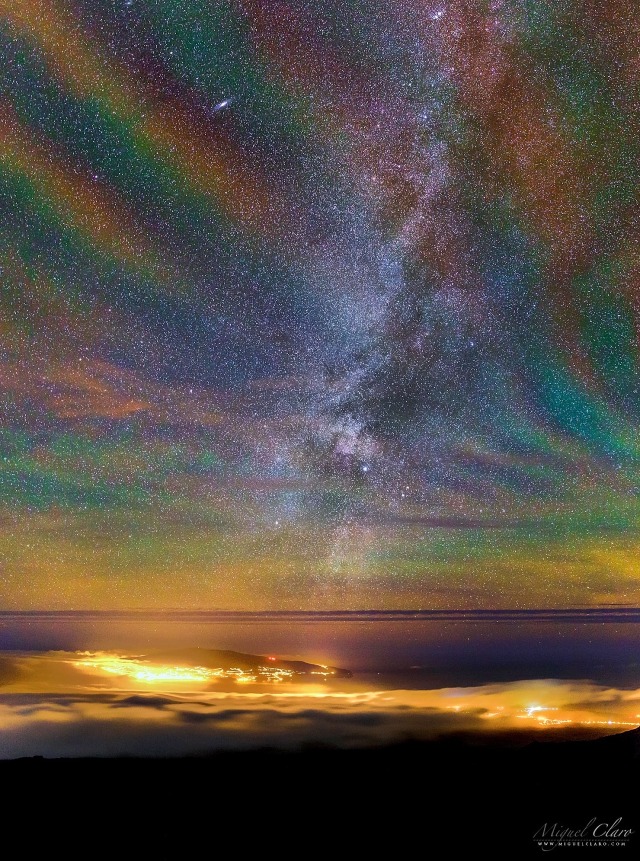
A rainbow airglow! Air glows all of the time, but it is usually hard to see. A disturbance, like a storm, may cause noticeable rippling in the Earth’s atmosphere. These gravity waves are oscillations in air, just like the ripples created when a rock is thrown in calm water. Makes sense right? But where do the colors come from? The deep red glow likely originates from OH molecules excited by ultraviolet light from the Sun. The orange and green airglow is likely caused by sodium and oxygen atoms slightly higher up. A spectacular sky is visible through this airglow, with the central band of our Milky Way Galaxy running up the image center, and M31, the Andromeda Galaxy, visible near the top left.
Image Credit & Copyright: Miguel Claro (TWAN); Rollover Annotation: Judy Schmidt

Spiral galaxy, NGC 3521 is about 35 million light-years away, toward the constellation Leo. Relatively bright in planet Earth’s sky, it is easily visible in small telescopes but often overlooked by amateur imagers in favor of other, more popular, spiral galaxies, like M66 and M65. It’s hard to overlook in this colorful cosmic portrait, though. Spanning some 50,000 light-years the galaxy has characteristic patchy, irregular spiral arms laced with dust, pink star forming regions, and clusters of young, blue stars. This image also shows the galaxy embedded in gigantic bubble-like shells. They are likely tidal debris, which are streams of stars torn from satellite galaxies that have undergone mergers with NGC 3521 in the distant past.
Happy Easter to everyone who celebrates!
Image Credit & Copyright: Acquisition - Eric Benson, Processing - Dietmar Hager

This insanely detailed scene of a portion of our universe has so many famous stars and nebulae in it! Let’s dive in!! Starting on the far upper left, toward the constellation of Auriga, is the picturesque Flaming Star Nebula (IC 405). Continuing down along the bright arc of our Milky Way Galaxy, from left to right crossing the constellations of the Twins and the Bull, notable appearing nebulas include the Tadpole, Simeis 147, Monkey Head, Jellyfish, Cone and Rosette nebulas. In the upper right quadrant of the image, toward the constellation of Orion, you can see Sh2-264, the half-circle of Barnard’s Loop, and the Horsehead and Orion nebulas. Famous stars in and around Orion include, from left to right, orange Betelgeuse (just right of the image center), blue Bellatrix (just above it), the Orion belt stars of Mintaka, Alnilam, and Alnitak, while bright Rigel appears on the far upper right. This region was captured on 34 separate images, taking over 430 hours of exposure, and digitally combined to reveal the featured image.
Image Credit & Copyright: Alistair Symon

~The thought of you and me beeing nice to each other is as unrealistic as my body~

